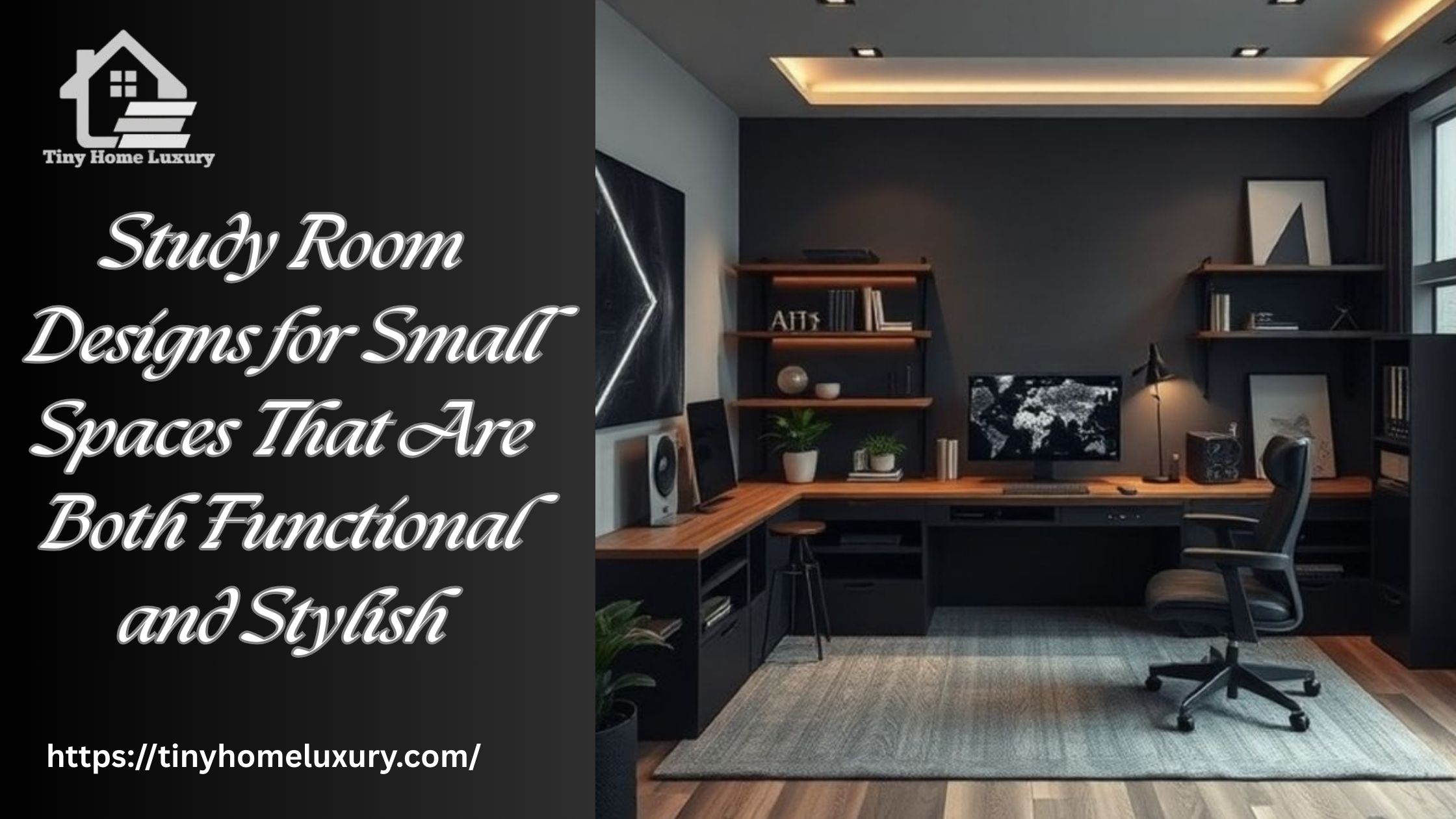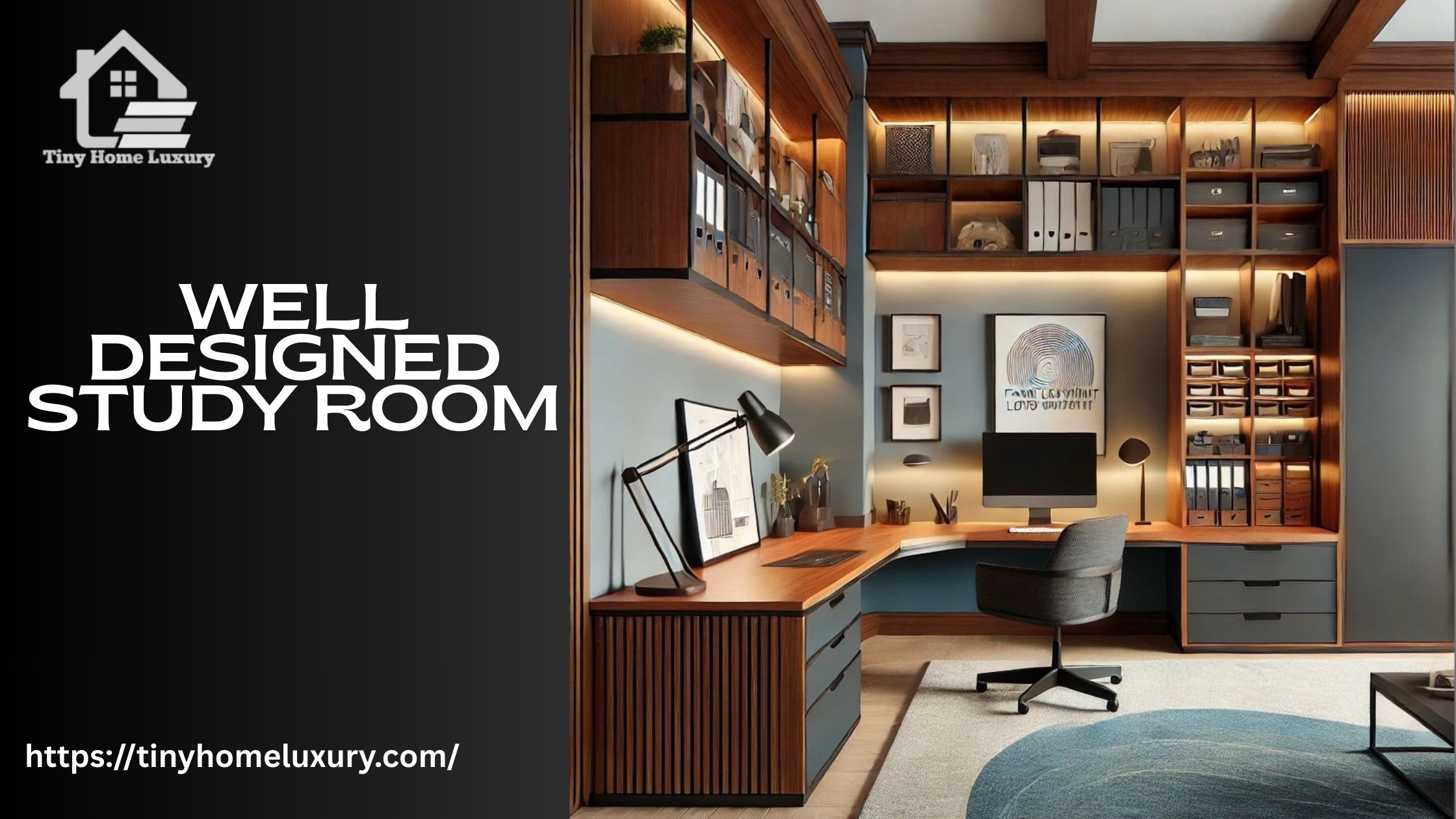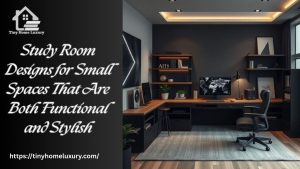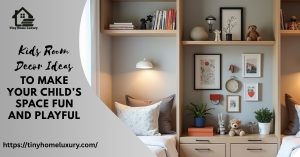Do you frequently find that your lack of a suitable workspace causes you to become distracted and find it difficult to work or study? You’re not alone if this sounds familiar. It may seem difficult to design a study room that is both practical and fashionable in a small area, but with the correct ideas, it’s not only feasible, but simple. This blog will discuss some of the greatest small-space study room ideas, providing you with the motivation you need to turn even the smallest nooks and crannies into chic and useful study areas. The ideal solution is to convert that space into a tiny study area! Arrange a few racks for storing things, a decent chair, and a small utility desk.
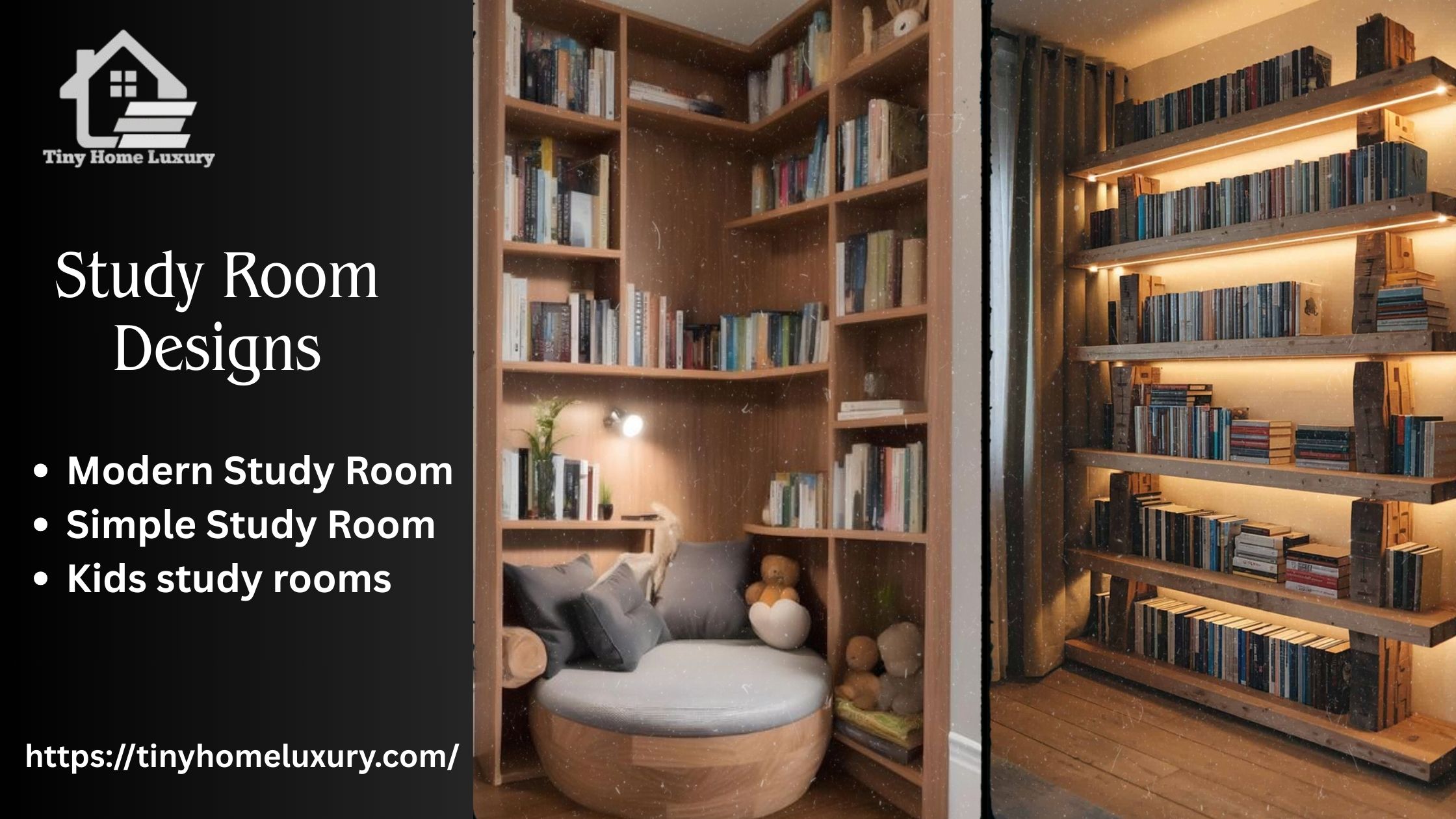
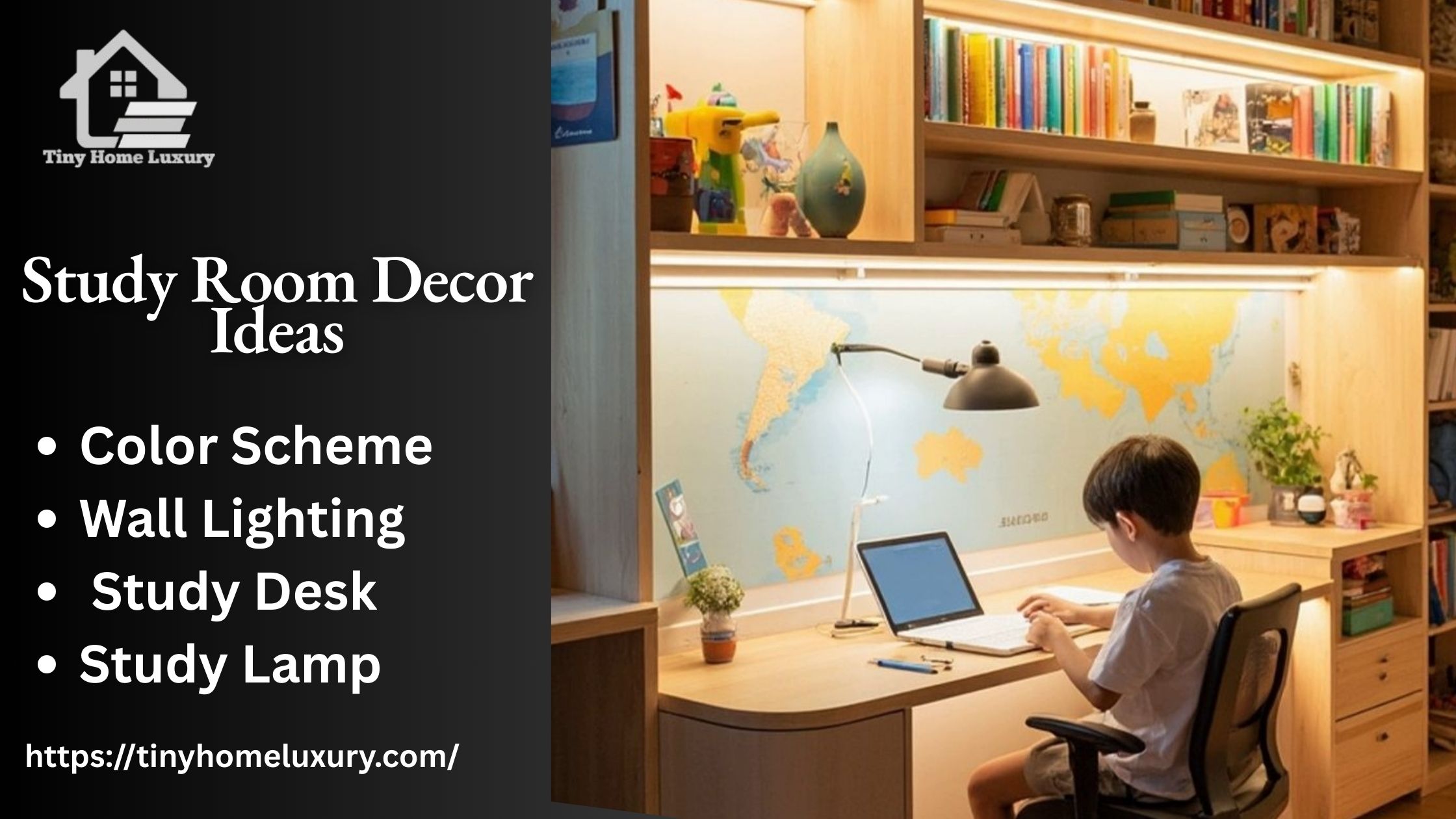
Designing a study space that encourages creativity, concentration, and productivity is essential. By reducing distractions and encouraging focus, a thoughtfully designed study space creates the best possible learning environment.
Functional Study Room Designs and Decoration Tips For Small Spaces
Study Table | Wall Painting Ideas | Folding Study Table
Establishing a dedicated study area is essential to maintaining productivity while working or studying. Having a designated space for work or study keeps you motivated, organized, and focused, even if you are unable to set up a whole room as your home office design. A thoughtful layout can boost productivity and stimulate creativity, adding enjoyment to your everyday chores. Your study space doesn’t have to be dull or uninteresting; small details like cozy chairs, well-lit areas, and clever storage can make a big difference. We offer creative study room ideas in this post to assist you in creating a space that is both practical and fashionable and meets your needs. Visit Tiny Home Luxury for additional clever design ideas.Study Room Designs
Here are the few study room designs that help you to create a productive and professional workspace.
Kids study rooms Design:
A dedicated study space is a great way to keep kids motivated, focused, and organized. While they complete their schoolwork and homework. Children’s ability to focus and retain information can be significantly impacted by their surroundings. Selecting a peaceful area with few distractions is the first step in organizing a study space furniture that is ergonomic. Long study sessions can be avoided by using a desk that is the right size and a supportive chair to help with posture. Another important consideration is lighting. A good desk lamp should be added for the evenings, and natural light should be present during the day. Children are kept alert and eye strain is lessened by proper lighting. Establish limits for the study area; it should be a place where learning takes place, free of distracting devices and toys.Study Room Designs for Adults:
Designing a study space for adults adheres to the same guidelines as creating one for children, but it takes a more advanced and practical approach. High-quality furniture, a robust desk, an ergonomic chair, and plenty of storage that will last for years is the cornerstone of a productive adult study area. Investing in comfort and durability is crucial because adults may work longer hours than children do in their study spaces. Personalization is also very important. Focus and creativity can be stimulated by including personal photographs, inspirational sayings, or artwork. An adult study space can be made to feel more organized, productive, and engaging by fusing functionality with well-considered design.Modern Study Room Designs:
A study space designed in the modern style might be ideal if you enjoy a neat and uncomplicated look. This layout prioritizes a neat and clutter free space, which inherently improves concentration and output. Consider sleek, contemporary furniture, built-in storage, white or neutral walls, and an abundance of natural light. A few plants or a single piece of statement art are examples of minimalist décor that can keep the room interesting without being overpowering. On the other hand, you might like designing a comfortable study space if you like a cozier and friendlier setting. Comfort is given top priority in this design, which makes use of cozy color schemes, soft lighting, and unique accents. To make the space feel cozy, add pillows, textured rugs, and soft throws. For a bit of coziness, think about adding wooden furniture.Study Room Furniture Design:
It’s critical to strike a balance between style and functionality when choosing study room furniture. The appropriate pieces not only improve the room’s overall appearance but also establish a productive and cozy space for working or learning. Consider your primary use of the space before purchasing any furniture. Purchasing a robust desk and an ergonomic chair is essential if your study regimen entails a lot of writing, reading, or computer work. During extended study sessions, these will promote proper posture and lessen fatigue. You could add a sofa or armchair for extra comfort, which would be perfect for brainstorming or leisurely reading.Simple Study Room Design:
A study space doesn’t have to be a large area with pricey furniture or ornate décor. The simplest study arrangements can actually be some of the most productive. Regardless of the size of your home, the objective is to create a space that encourages concentration and reduces distractions. Start with a peaceful area of your home or apartment if you have a limited budget or space. If at all possible, place your study area close to a window because natural light not only brightens the space but also improves mood and focus. Really, all you need is a cozy desk and chair that encourage proper posture and offer adequate room for your necessary stationery and notebooks. For study sessions in the evening, think about investing in a small lamp.Study Room Decor Ideas
Concentration, productivity, and creativity all come together in the study space. A well-designed study space can significantly improve your focus and productivity, whether you’re working from home, studying for an exam, or just trying to concentrate on a project. A well-designed, practical study area can improve your mood, cut down on distractions, and boost productivity. Lighting is one of the most important components among the many that go into creating the perfect study space. For instance, a good study lamp serves more purposes than just providing light. It establishes the mood of the space, guarantees comfort, and helps you concentrate. You’ve come to the right spot if you’re looking for the best study lamp or study table lamp.
Best Study Lamp:
A good study lamp is the most crucial component of any study space. To guarantee that you have enough light for extended periods of reading or writing, a high-quality study lamp is essential. Your eyes deserve the best treatment if you’re spending long hours studying, and a good lamp is a great way to avoid eye strain. To help you concentrate on your work without discomfort, look for lamps with flexible necks, ergonomic designs, and adjustable brightness levels. Enough lighting should be provided by the best study lamp for students. Additionally, take into account lamps that complement your own tastes and style. Your room can be made more comfortable and productive with a study table lamp, which will help you concentrate better.Functional and Comfortable Study Desk:
The focal point of the space is the study table. You can increase your productivity and maintain focus with a neat, orderly desk. Make sure there is adequate room on your study table for your laptop, books, notebooks, stationery, and other study necessities. Think about adjustable options when selecting a desk study lamp so you can quickly adjust the light to your needs. In addition to lessening eye strain, a well-lit desk keeps your attention on your work and helps you avoid unneeded distractions. Additionally, to avoid distractions building up, regularly declutter your desk. Store any non-urgent items out of sight and only keep the necessities close at hand. Your ability to focus can be greatly improved by adopting this easy habit.Wall Lighting for Ambiance:
Although a study lamp is essential for concentrated work, wall-mounted focus lights can improve the atmosphere of your study space. To lessen harsh shadows and create a calming atmosphere, use soft, ambient lighting. Long study sessions can be more comfortable for the eyes when the room is softly lit by LED strip lights or wall sconces. Think about study table lamps with a dimming feature so you can change the light according to your needs and the time of day. When you need to focus, turn up the lights in your workspace; when you’re ready to unwind, turn them down.Color Scheme of Study Room:
Your mood and level of productivity can be greatly impacted by the colors in your study space. Certain colors have been linked to improved creativity and focus, according to research. For example, while warmer hues like yellow and orange can inspire vitality and creativity, shades of blue and green can improve focus. In order to feel inspired and comfortable while working, think about using your favorite colors in the furniture, accessories, and wall paint of your study space. Choose muted, calming hues for most of the room, with accents of vibrant hues.- By including ergonomic furniture, sufficient lighting, and well-organized storage solutions, a thoughtfully designed study space can increase productivity. Tasteful furnishings, unique accents, and a general aesthetic that promotes creativity and problem-solving can all stimulate creativity.
- A study room design can be a peaceful haven that offers a place for rest, reflection, and original thought, all of which enhance emotional health in the long run.
- A well-designed study space can be adaptable to different study activities, technology demands, and adaptive learning specifications.
Tips to Design the Perfect Study Room
Choose a calm, quiet area of your house to use as your study space whenever you can. Since a cluttered environment can negatively impact your ability to focus, the primary objective is to reduce distractions. You can focus more clearly and work more productively when you have a peaceful, well-organized study space. Keep the design subtle and uncomplicated. Don’t stuff the room with extraneous furnishings or decorations. Keeping a study area organized requires storage solutions. You can arrange notebooks, stationery, and other study necessities in drawers, cabinets, and shelves. Another important consideration is adequate lighting; use as much natural light as you can and add a desk lamp for work in the evenings. You can design a study space that encourages concentration and lowers stress by fusing comfort, organization, and simplicity.About Us: Inspiring Study Room Designs
Tiny Home Luxury specializes in providing innovative and useful study room design. Blogs assist you in converting any area, no matter how big or small, into a chic and functional retreat. From simple designs to comfortable nooks, our concepts combine style and utility, making them ideal for contemporary living. Our content can serve as inspiration for your next home project, whether you’re creating a study nook for adults or children. Please contact us at any time with questions, and read our privacy policy to find out more about how we safeguard your data.Conclusion:
It’s crucial to keep in mind that every person works differently when creating a study area. While some people do best in home decor with just one desk, others would rather have a whole room with several workstations, books, and personal items. Whether you prefer a cozy setting full of inspiration or a minimalist setup for optimal focus, your study space should represent your individual habits. To create a cozy and effective space, think about the lighting, furniture, and organization. Ergonomic desks and chairs facilitate extended study sessions, and natural light can improve mood and focus. Designing a study space that promotes comfort, creativity, and focus is crucial, regardless of your preferences or financial constraints. You can design a place you truly enjoy spending time in by striking the correct balance between functionality and style, which will make working from home or studying productive and pleasurable.FAQS
Should study rooms be the same for kids and adults?
Although the concepts are similar—quiet, orderly, and comfortable adults might favor more formal furnishings and décor, while kids might benefit from bright, playful accents.
Can a study room work in a small space?
Of course. With the correct arrangement, lighting, and furniture, even a tiny nook or corner can be used as a productive study space.
Why is having a study room important?
A study room makes it easier to focus on tasks, reduces distractions, and promotes healthy study habits in both adults and kids.

